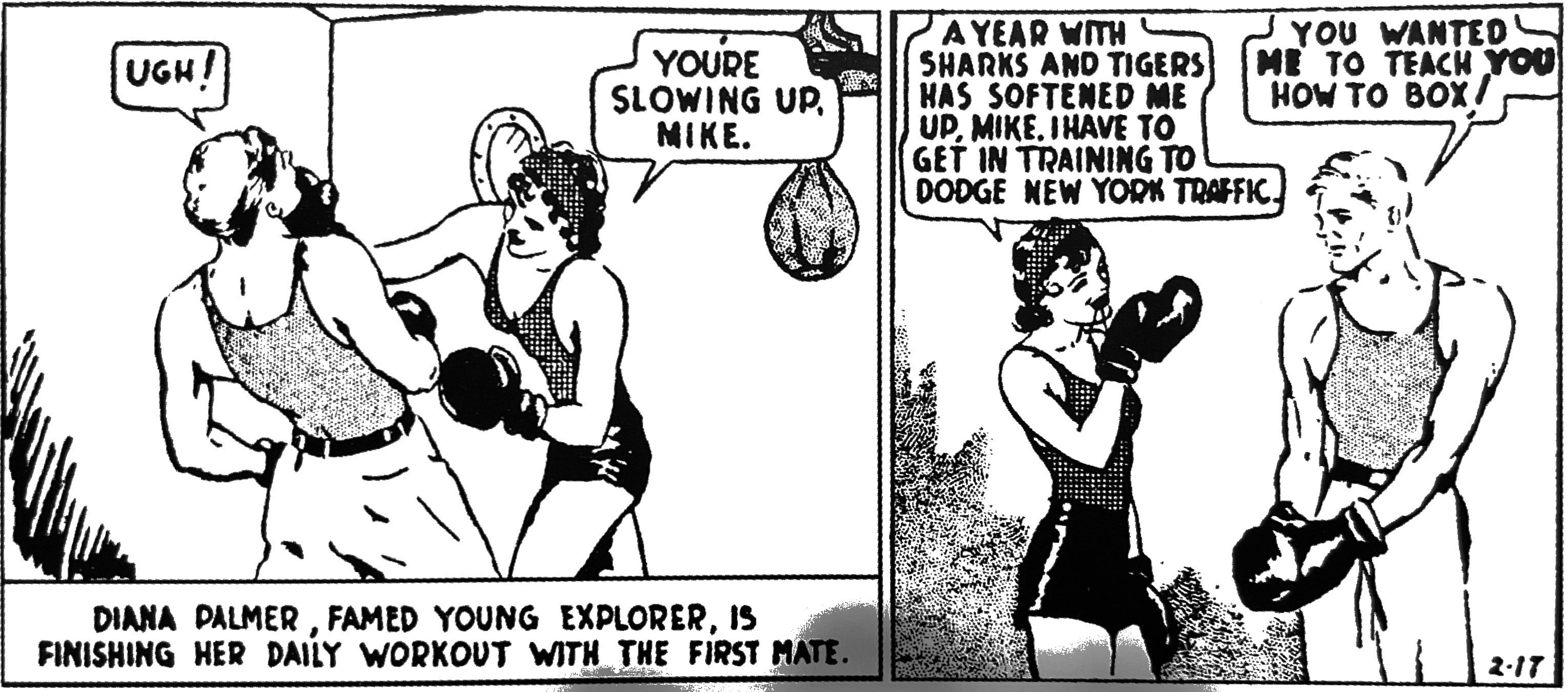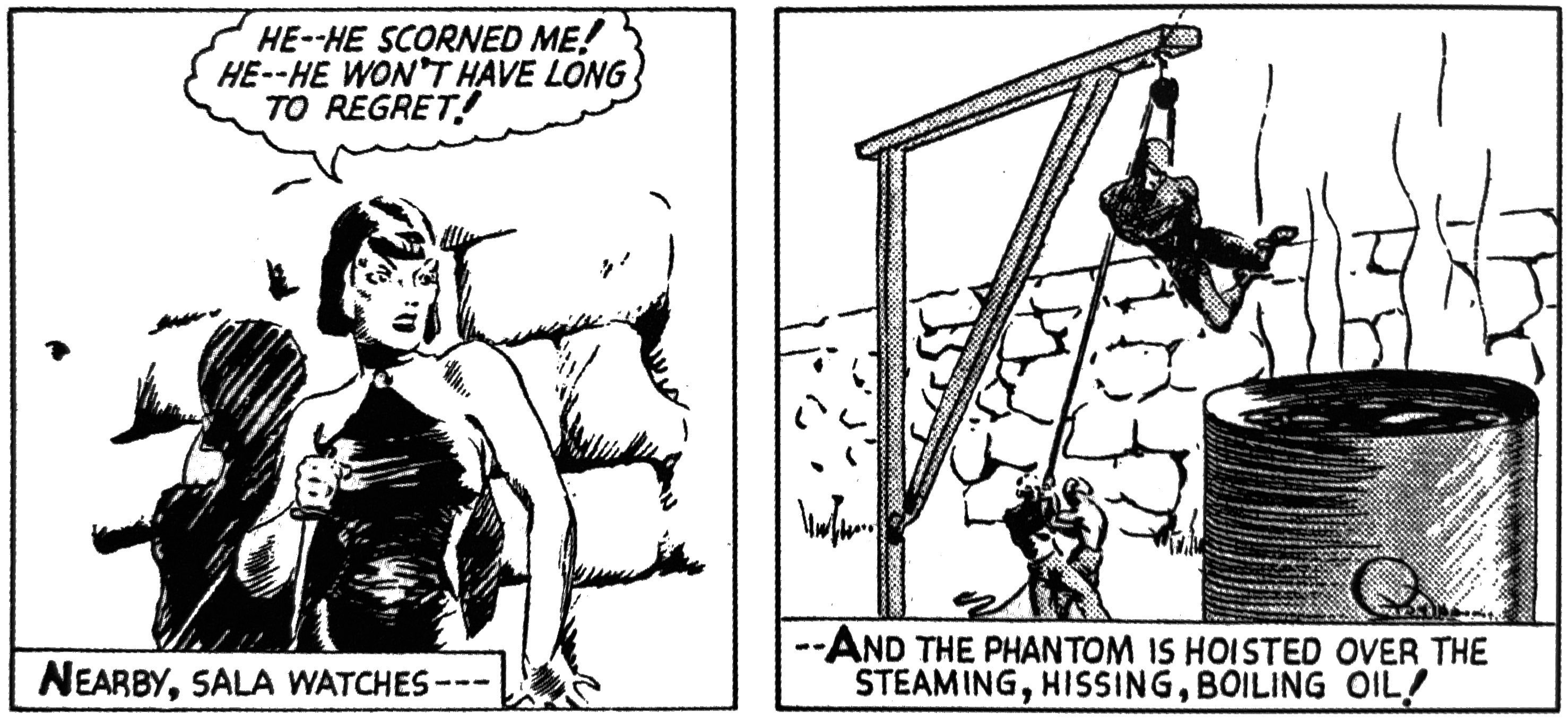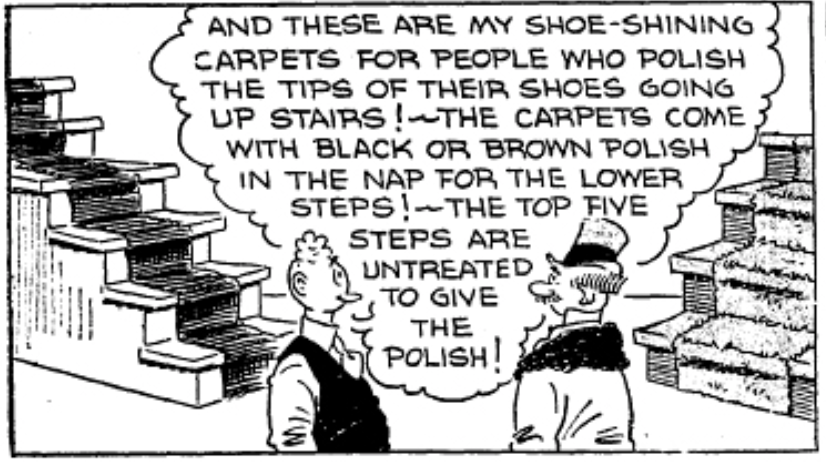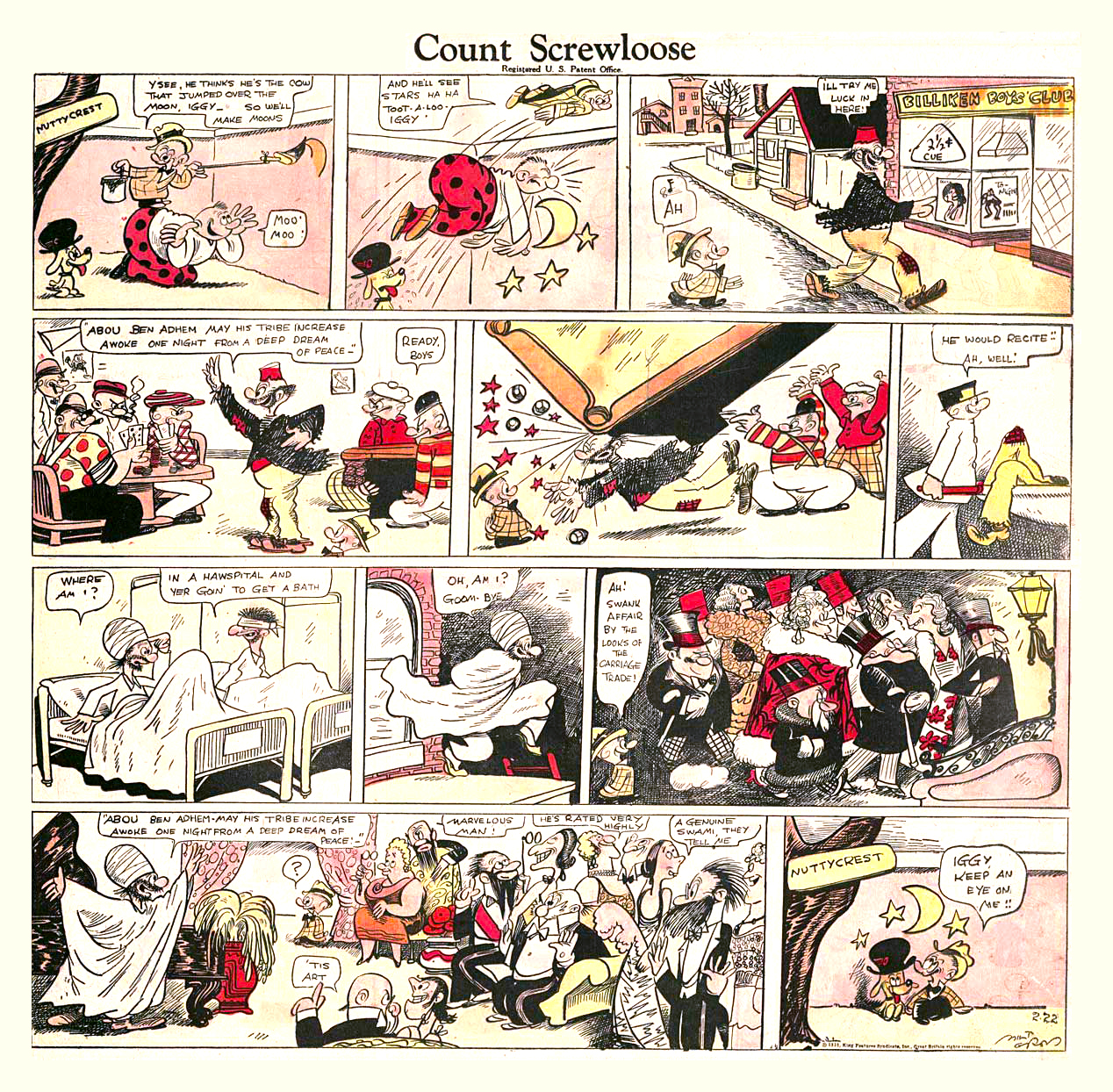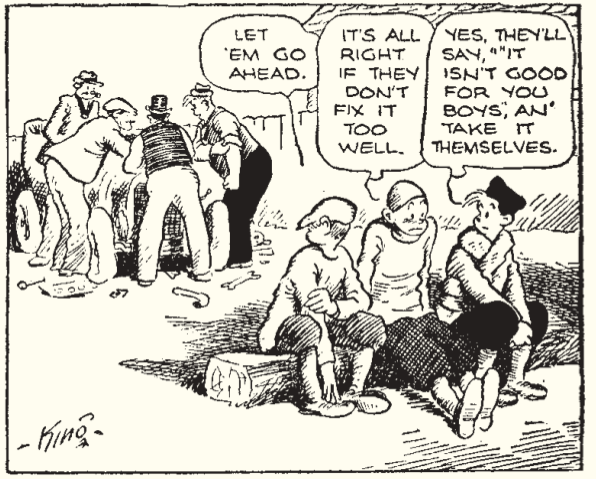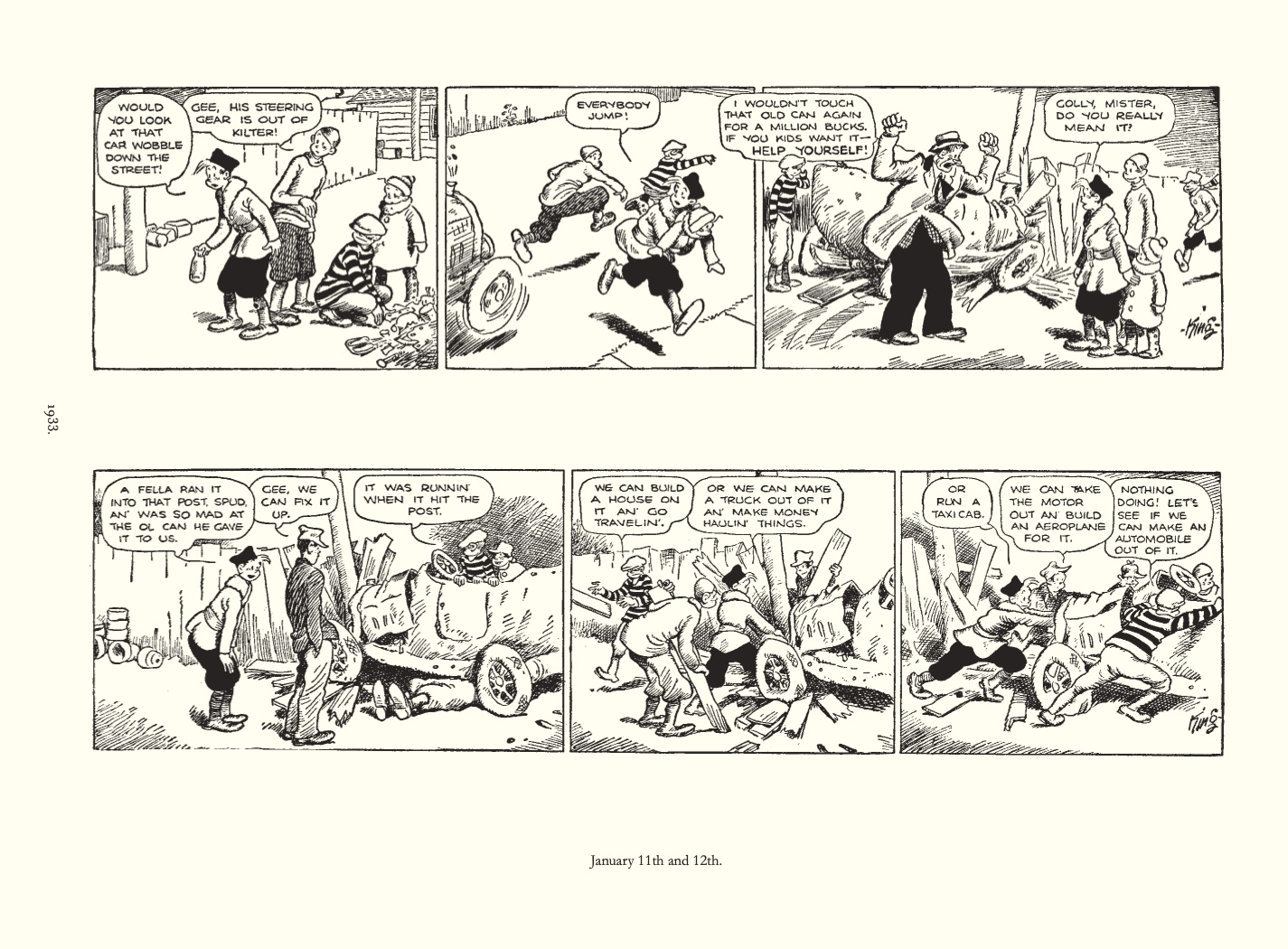Hot on the heels of his first comic strip success, Mandrake the Magician, author, Lee Falk crafted a second and arguably more important bridge between dime novel and pulp heroism and the “super” heroes soon to dominate the American pop culture scene. Falk recalled later he had originally conceived of The Phantom having an alter ego as a millionaire playboy, echoing pulp heroes The Shadow and The Spider. Within the first months of the strip’s premiere in 1936, however, he changed course. “I became intrigued with the whole mythical notion about 400 years and 20 generations of Phantoms in the jungle. The more I got into that, I keep adding to the background.
Here The Phantom relays in thumbnail form to his perennial love interest Diana Palmer, the origin of The Phantom legend. It is a 400 year-old revenge fantasy, in which generations of Phantoms avenge the treachery of Singh pirates. The first-born son of each generation of Phantom must dedicate himself to fighting “all forms of piracy.”
Among jungle natives, of course, The Phantom is known as “The Ghost Who Walks.” Like much of pulp adventure fiction of the day, The Phantom was colonialist fantasy writ large, complete with ignorant or naive native cultures championed by this white (in purple wrapping) savior.
While The Phantom had no super powers, he was the first hero to don the skintight costume that would soon become standard for comic book super heroes with the arrival of Superman several year’s later. The strip was drawn by Ray Moore, following an Alex Raymond style that King Features encouraged across its adventure line of strips.
Like the spicy pulps of the era, The Phantom always had an erotic and sadomasochistic undercurrent that provided more titillation for young and old male readers than usual. Falk and Moore seemed devoted to depicting women in various states of undress and with gossamer thin gowns that were as skintight and revealing as The Phantom’s own outfit.
In fact the series begins with Diana Palmer in short shorts, low-slung tank top and boxing gloves pummeling her male opponent. This set the subtext for the series. For a 400-year-old Ghost, The Phantom finds himself bound and tortured more than you would think possible. And the female love interests and villains alternate between being damsels in need of saving or dominatrixes asking for a slap-down. The second major adventure cycle in the series is about a band of female pirates, the Sky Band, which quickly becomes a figurative S&M orgy of women alternately endangering The Phantom and falling in love with him.
The series has been enduring, however, thriving in comic strip form for these many decades and in comic books as well. Falk continued to author the strip until his death in 1999.





